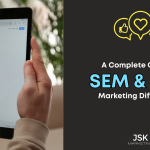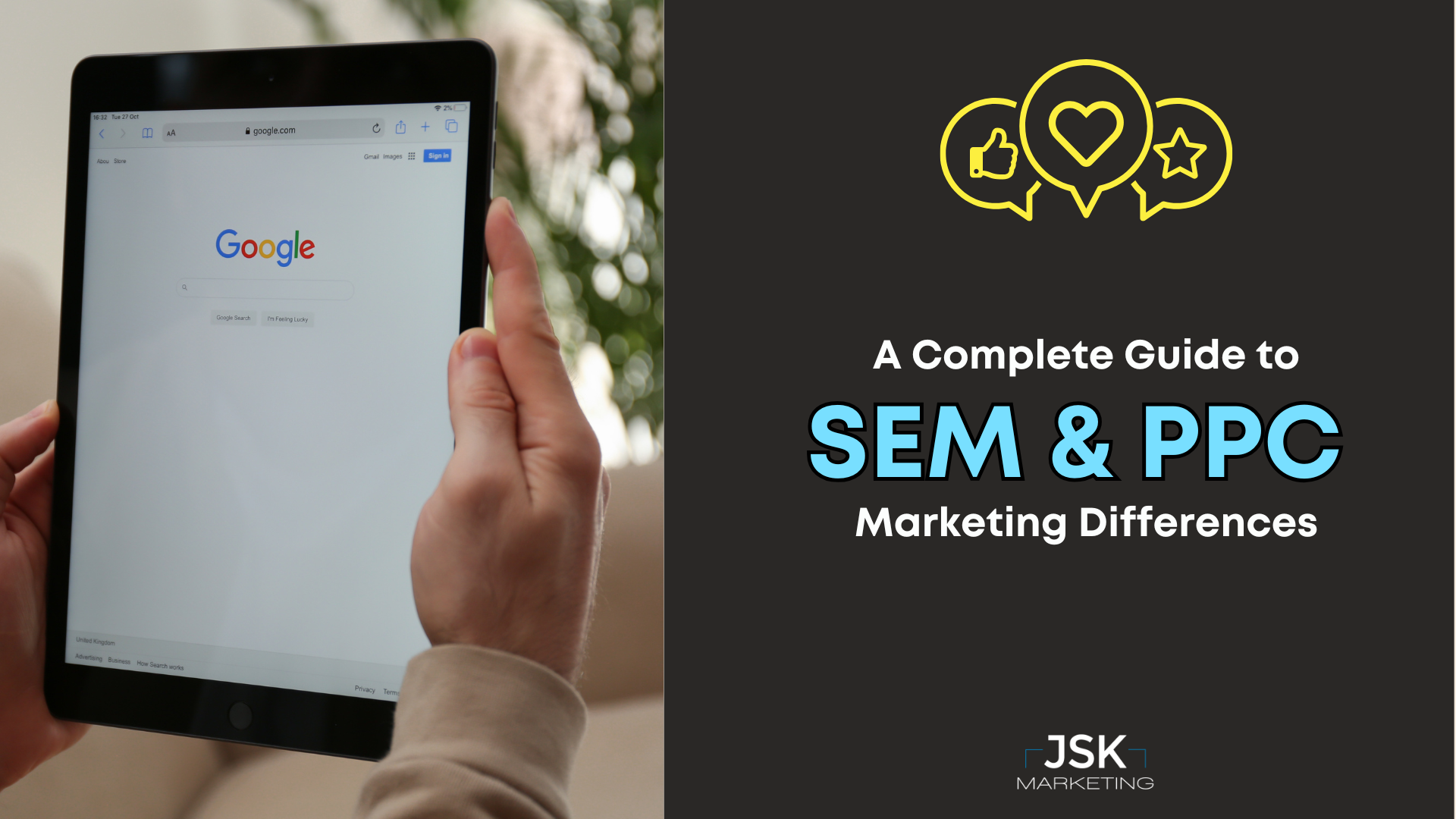
PPC or Pay-Per-Click marketing is a paid marketing strategy where a brand creates a digital ad and is charged each time a user clicks on it. When PPC ads are shown in search results, this is considered SEM, or search engine marketing. But PPC isn’t always related to SEM. SEM relates to marketing through the use of search engines. SEM was once used as an umbrella term to encompass both SEO (search engine optimization) and paid search activities. However, over time the industry has adopted the SEM acronym to refer solely to paid search. There are multiple potentially confusing digital marketing acronyms, therefore it is important to understand the difference between them. Our hope is that after reading this blog, you’ll better understand the differences between SEM and PPC.
Pay-Per-Click (PPC) can also be referred to as paid search or search ads. Google Ads is by many measures the most popular paid search platform used by search marketers, followed by Microsoft Advertising, which also serves a significant portion of ads on Yahoo. The PPC advertising model places a company’s advertisements in search results or on another website to generate more traffic back to the advertiser’s site. Rather than pay a standard fee for the ad, the company pays per click. This means the company pays each time someone clicks on the ad and is directed to their website. Businesses that do PPC are the ones running the ads you see at the top and right-hand sides of the screen on search engine results pages.

For example, when you search for one of our clients, Beacon Lake, on Bing you can see that an ad for Beacon Lake pops up at the top. The amount of money an advertiser pays per click depends on how frequently the keyword they are advertising on is searched. The more clicks you get on the ad, the more opportunity you have to gain new customers and increase your profits. PPC is generally an easy, quick way to get your website to appear at the top of search engine results, while SEO brings in organic traffic and takes a lot longer to achieve results. However, ongoing SEO efforts will boost SEM performance and therefore work best when practiced together. When PPC strategies are used on channels other than search, this is not considered SEM. The difference between SEM and PPC is that SEM is meant for advertising on search engines only, whereas the PPC can refer to search advertising, display advertising, and affiliate advertising.
Paid social and paid search advertising makes it easy for online users to find your business as well as the products you offer. Search ads have become the most common form of paid advertising. Paid search advertising platforms show ads in response to search queries. What makes paid search so beneficial is the fact that it is intent-based advertising, meaning people see your ads because they are actively looking for a solution to a specific problem. It is important to be mindful of the intent of consumers when choosing a platform to market your business. In contrast, paid social ads show up when people are on a social media platform like Facebook, YouTube, Twitter, or even Reddit. Unlike paid search, your audience isn’t actively looking for a solution to a problem when on these sites. Those who wish to access user-generated content or engage with people in their networks will use social advertising to create better brand awareness.
Search ads are strong tactic for driving sales and can produce a large ROI. alternatively, display ads are best for building awareness and can be bought on different models, including CPM and PPC. CPM is an abbreviation for cost per thousand impressions. CPM is used to measure the cost of online advertising campaigns, where each impression is an appearance of an ad on a web page. When PPC is used with social campaigns, you can drive business from a very large group of people, many of whom may never have bought from you otherwise. Since social ads are the fastest growing segment of paid advertising, they can be very effective in getting your message to your intended audience.
When it comes to online marketing, pay-per-click advertising is one of the most powerful tools you can use. While PPC is typically the largest and most demanding component of SEM, both PPC and SEM are paid initiatives that offer real-time data, ROI, and protected data that can only be accessed by advertisers of certain platforms. Time and financial limitations make it hard to take advantage of every advertising opportunity. With that in mind, it is important to ask the question: should you focus on paid search or paid social? If your company needs help with paid search or paid social as a part of your marketing strategy, contact JSK Marketing today! Visit our website.




